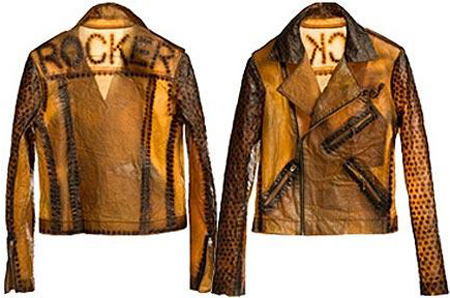Super durable fabric
Telegraph said scientists from the University of London, UK, collaborated with designers of Saint Martins University of Art and Design to build a super-light, ultra-durable material for the industry. fashion.

To create new fabrics, scientists mixed green tea, sugar and other nutrients into each other for several days. Then they put Acetobacter bacteria into the mixture so that they made cellulose fibers. After three weeks cellulose fibers bind together into thin films on the composite surface.
When dried, thin films become transparent fabrics and look like papyrus. However, it has such a surface texture that it is so tough and tough to tear it.
Professor Paul Freemont, a molecular biologist at London Experimental University, said: 'Bacteria can make cellulose fibers and those fibers form a fabric that floats on the surface of the solution. This method produces pieces of cloth that are arranged randomly and irregularly. So we are working on ways to make the fibers more evenly arranged . '
Suzanne Lee, a designer of Saint Martins College of Art and Design, used new fabrics to sew shirts, jackets, evening dresses and shoes.
Freemont and Professor Alexander Bismarck, a material specialist at London Experimental University, are studying techniques to help other bacteria also make cellulose fibers. They claim that Acetobacter produces cellulose fibers by certain genes. If these genes can be found and introduced into other bacteria, they will also produce cellulose fibers. That way scientists can create new fabrics in bulk and even add new features to the fabric. Even so, Professor Freemont admitted that researchers had to overcome many challenges before the fabric from tea leaves appeared on the streets.
- New, super durable carbon fiber for sewing armor
- Waterproof fabric thanks to its ability to drain water
- Detection of super-durable materials from fire ants
- Glass smashed without breaking
- Discover China's super-durable sticky rice mortar
- Scientists create new materials that are as durable as diamond
- Super waterproof fabric
- Unveiling super heat-resistant fabric with silver fiber
- China makes super durable materials for
- Highly durable ceramic coating, resistant to temperatures of 2000-3000 degrees Celsius
- Unveil the ultra-durable memory chip technology
- The University of Pennsylvania produces 1000 times thinner than paper and is durable
 'Barefoot engineer' invents a pipeless pump
'Barefoot engineer' invents a pipeless pump Process of handling dead pigs due to disease
Process of handling dead pigs due to disease Radiometer
Radiometer Warp Engine: Technology brings us closer to the speed of light
Warp Engine: Technology brings us closer to the speed of light